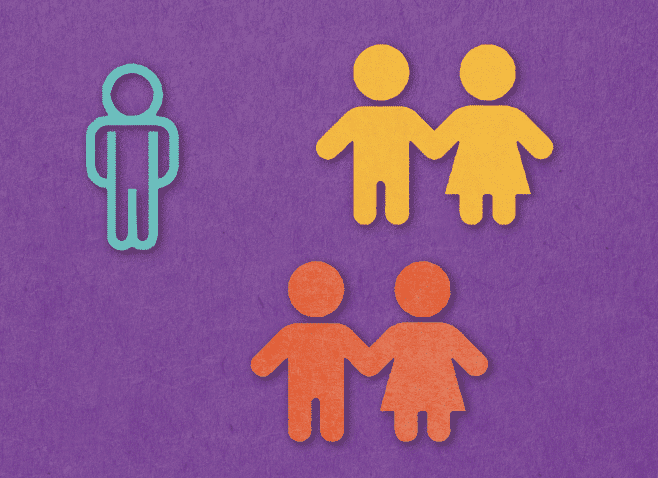In 2019, we reported on a small, exploratory sample of data that suggested many children who attend child care spend almost the entirety of the day in language isolation, experiencing very little interaction with their teachers.
At the time, the picture was unclear as to whether their experiences were representative of a broader trend or confined to that smaller group. Fast-forward more than three years, and that picture snaps into much clearer focus:
[quote]
According to LENA’s recent analysis of day-long audio recordings from 15,820 children, approximately one in five children spent most of the day in language isolation. The children attended child care in a variety of early education settings, including center-based classrooms, Head Start classrooms, and family child care (FCC) environments.
Promisingly, the same data analysis identifies LENA Grow, a practice-based professional development program for early childhood educators, as one potential solution for reducing the number of infants, toddlers, and preschoolers in language isolation. Strong evidence suggests that participating in LENA Grow can help bring children out of isolation and significantly increase the level of interactions they have with their teachers.
“These results show that children in child care are four times more likely to experience language isolation than they are to experience optimal language environments,” said Dr. Jill Gilkerson, LENA’s Chief Research and Evaluation Officer. “While that’s alarming, it’s promising to see that a program like LENA Grow can help turn the tide.”
How many children experience language isolation in child care?
In total, 2,940 of the 15,820 children, or 18.6%, spent the vast majority of their day in language isolation. (See Figure 1.)
LENA’s researchers describe a child as experiencing language isolation if they engage in fewer than five conversational turns per hour for all but the single hour during which the most conversational turns occurred. For instance, arrival time or lunch time may result in more conversational turns, but otherwise the child experiences almost no back-and-forth interaction with a teacher throughout the day.
Conversational turns are simple serve-and-return verbal interactions between adults and the children in their care. These serve-and-return interactions have been linked to such positive outcomes as improved social skills in infants and toddlers, executive functioning in preschoolers, and long-term language skills such as verbal comprehension and vocabulary development. LENA’s “talk pedometer” technology measures conversational turns continuously and accurately throughout the day, both at the level of the individual child and the classroom as a whole.
“Talking with young children, not just to them, may make a big difference in their lives for a long time to come,” said Dr. Gilkerson. “It’s important to start early, and it’s important to amplify the critical role interactions play not just in the home, but also in child care settings.”
In this analysis, a higher percentage of children in non-Head Start center-based settings experienced language isolation. 22.6% of those children fell below the threshold of five conversational turns per hour. By comparison, 12.9% of children in Head Start classrooms and 15.7% in FCC settings experienced language isolation.
The positive effects of LENA Grow
This accompanying evaluation of LENA Grow shows that the program may help change these figures for the better. Pre/post program measures were available for 10,224 of the 15,280 children.
Elsewhere, we’ve reported on LENA Grow’s capacity to improve center- and classroom-level outcomes, such as CLASS scores and teachers’ perceptions of their own efficacy. In addition, we’ve written about how LENA Grow may improve individual child outcomes, such as TS GOLD® scores, language development scores, and social skills.
Now, we can also look at how LENA Grow may help teachers connect specifically with children who come into the program experiencing language isolation.
[quote=”2″]
In total, of the 10,224 children who met evaluation criteria, 1,498 were in language isolation at baseline, before their teachers had participated in any LENA Grow coaching sessions. By the end of the program, 58.5% of those children had moved out of language isolation. That’s 877 children who went from almost zero interaction with their teachers to regular interaction throughout the day.
The data from this analysis reflects the experiences of teachers and children who participated in an older version of LENA Grow, which launched in 2018 and was replaced by the new version in 2022. Liz Pettit, Senior Product Manager for LENA Grow, has high hopes for the updated program’s capacity to help teachers reach an even greater percentage of children experiencing language isolation.
“Now more than ever, the program will help teachers work toward behavioral changes that benefit the children who need it the most, even with all the challenges they face as educators.”
A sense of urgency
Fifty years ago, only one in five children attended child care. Now, according to the Digest of Education Statistics and the RAPID Survey Project, approximately half of all children spend at least part of their days in child care settings. At the same time, unprecedented systemic challenges, including economic insecurity, threaten the early childhood educator workforce.
As the number of children attending child care continues to rise, so does the urgency with which we must work to reinforce the importance of classroom language environments.
[callout]



